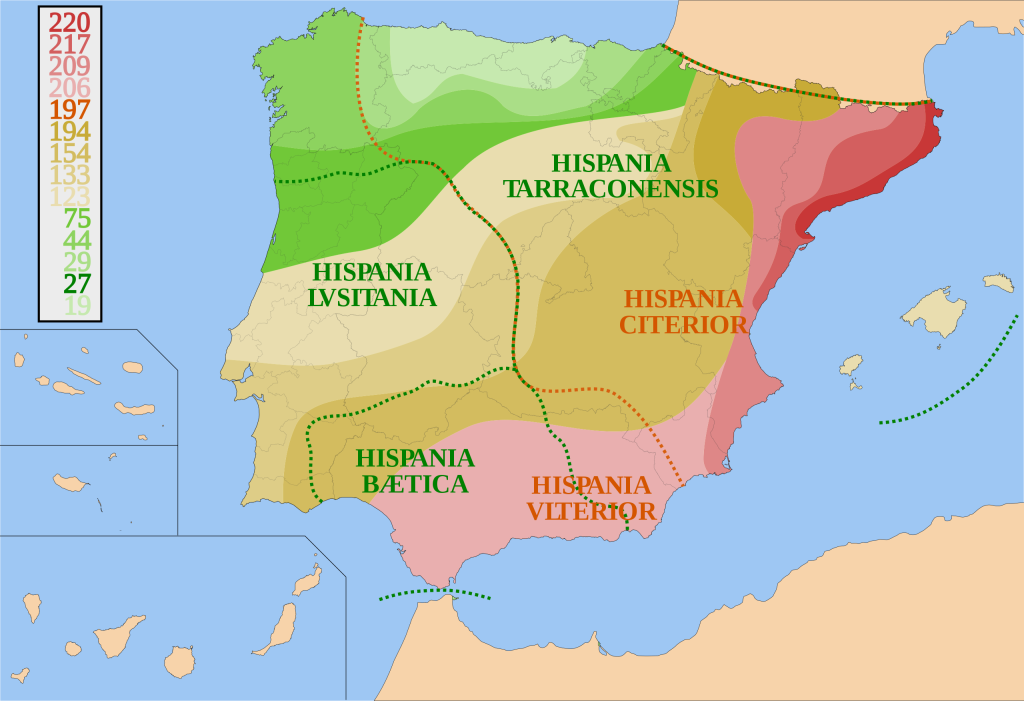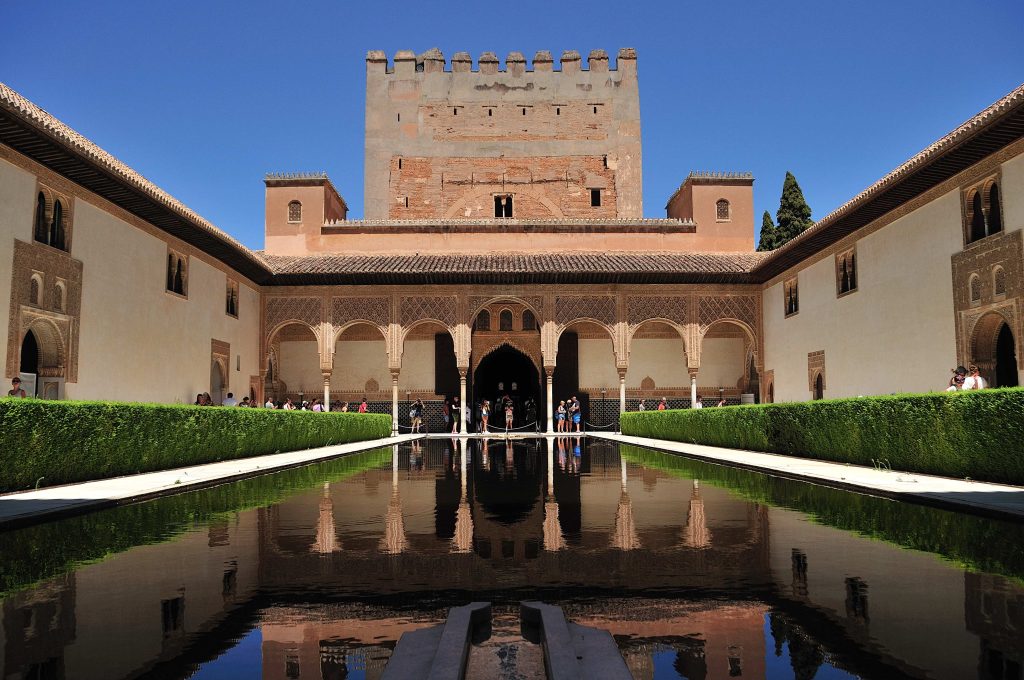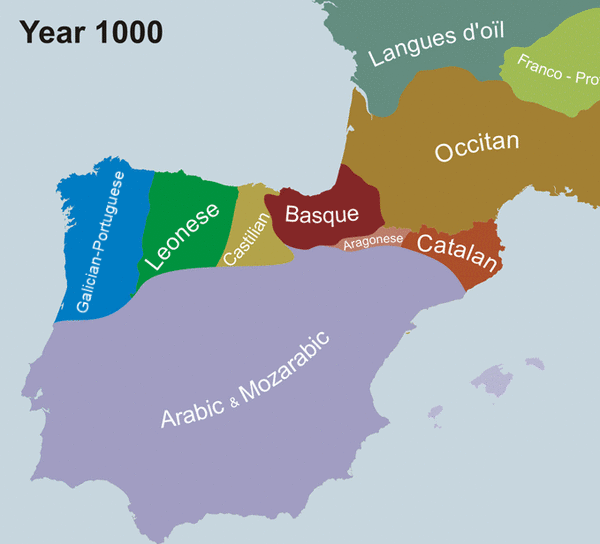If you’ve ever wondered what the history of the Spanish language is like, and how it came to be, don’t worry, we’ve got you covered. Of course, before you dive into its history, you might want to brush up on the 5 languages of Spain first, since the history of Spanish is what created these languages, in the first place, and how they developed over the last few centuries. So, let’s take a brief look at what created the Spanish language in the first place, and how it developed over time.
Vulgar Latin – The Birth Of The Spanish Language
As you probably know, Latin was the dominant language in all of Europe in its early days, when Rome began conquering its surrounding areas. Back then, Latin along with other early European languages like Germanic, Celtic and Iberian were spoken, and as a result of migration, learning, and the mixing of peoples, the Spanish language was born. This was a result of the mixture of the then current languages, and was actually classified as “Vulgar Latin”, as opposed to the “Classic Latin” you find in many ancient texts.

Vulgar Latin was a combination of the local dialects of the early native settlers, in the Iberian Peninsula and its surrounding region, once known as “Hispania”, and Latin, as the Roman Empire imposed their culture on the natives, after conquering the area in 218 BC. It was even used after the empire, in the region, collapsed and other germanic invaders, or the Visigoths, occupied the area, in 476 AD. However, their occupation didn’t last too long either, because in the 8th Century AD, the Islamic empire began to stake a claim in the south of Spain, after having conquered much of northern Africa, the Middle East, and even parts of Eastern Europe.
The Arabic Influence
After the Islamic empire started conquering the southern regions of Spain, they imposed much of their own culture and language into the region, and as such, you’ll find a lot of Arabic influences in much of Spain’s southern regions, like in Andalusia, Murcia, Granada, and Seville. In fact one of the best examples of this would be the iconic palace of La Alhambra in Granada.

As their influence grew, the Muslim Moorish people began to use their own Arabic and Mozarabic languages, which in turn influenced the development of Spanish as we now know it. In fact, this language gave rise to at least 4,000 words in what we now know as the modern Spanish language. Of course, even as the Muslim empire began to grow, they didn’t reach quite as far as the Iberian Peninsula, and many of the Visigoths and their kingdoms remained intact. They even followed the trends that were taking over much of Western Europe, as they developed their own dialect of Spanish, called Castilian (Castellano).
The Rise Of Castilian – The Modern Spanish Language
If you’ve read our previous post on Isabella and Ferdinand of Aragon, then you’ll know that this iconic power couple retook the south of Spain, from the Muslim Moors in 1492. Now, both Isabella and Ferdinand spoke Castilian, since that was the dominant language, of the nobility at the time. But as you know, there is a region in modern day Aragon, where a different language is spoken, called Aragonese. This language is mostly isolated to the Pyrenean region of Aragon, since it was borne in that area. And although the kingdom of Aragon had spread further south, even towards Murcia, because of the union of Isabella of Castile and Ferdinand of Aragon, Castilian overtook the use of Aragonese.

This is also a similar story with the other languages of Spain, with Galician, Basque, and Catalan being isolated in the areas they had originated from. Thus Castilian became what we now know as the modern day Spanish language. Not only that, but the famous king Alfonso X of Castile, who preceded Isabella and Ferdinand, even made writing in Castilian a fad, as he commissioned his scribes to document many different documents on subjects like astronomy, law, history, and even the translation of classic literature into the Spanish language. This ensured that the language would leave a lasting legacy throughout reconquered Spain.
The Conquering Of The Americas – Latin American Spanish
Of course, we all know at least something about the Spanish Inquisition, and that main fact is the Spanish takeover of South America, through its use of force, violence and the use of the slave trade. Through their efforts, the Spanish language barged its way into South and Central America, where it’s still spoken today, with the exception of Brazil, where the population largely speak Portuguese, and the surrounding Caribbean islands where French is mostly spoken. However, in the Spanish speaking countries of South and Central America, each have there own version of Spanish, with pronunciations and grammatical uses differ greatly.

Think of it this way, both America and the UK have their own words for the same thing, like an “elevator” in the US would be called a “lift” in the UK, or even in the UK itself, where “a quid” could mean £1 amongst different regions of the country. This is the same difference in Latin American Spanish and European Spanish. There are words in European Spanish that aren’t used in Latin American Spanish, and vice versa. For example the word “car” is translated to “coche” in European Spanish, but “carro” in Latin American Spanish.
The Spanish Language Is Still Evolving
Of course like with any language, the Spanish language is still evolving, and you’ll find that, like with the English Dictionary, more words are being added to it every day, thanks to the popularisation of different slang words. Eventually those words will be come part of the language as well, and the Spanish that we once knew will be radically different, in the future, as what we now deem to be slang, will be more normalised. So, although the history of the Spanish language is complex and interesting, it’s evolution will be just as interesting as well.


